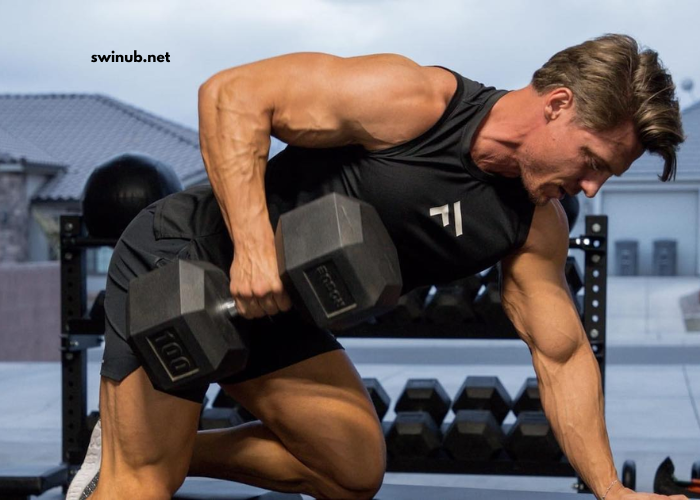Fitness routines are an essential component of maintaining optimal health and wellness. As we become increasingly aware of the benefits of regular physical activity, it’s clear that a balanced exercise regimen not only improves our physical strength and endurance but also supports mental clarity, emotional well-being, and overall longevity. In this article, we will explore various types of effective fitness routines and provide guidance on how to tailor them to your individual goals, whether you’re aiming to lose weight, build muscle, or simply maintain a healthy lifestyle.
Understanding the Importance of Fitness Routines
Before diving into specific exercises and routines, it’s important to first understand why fitness is so essential. Regular physical activity plays a significant role in preventing chronic diseases such as heart disease, diabetes, and obesity. It can also reduce the risk of mental health issues like anxiety and depression. Engaging in fitness routines helps maintain a healthy body composition, promotes better sleep, and enhances cognitive function, all of which contribute to an improved quality of life.
The Four Pillars of Fitness
To create an effective fitness routine, it’s essential to address the four fundamental components of physical fitness:
- Cardiovascular Endurance: This is the ability of your heart and lungs to supply oxygen to your muscles during prolonged physical activity. Activities like running, cycling, and swimming improve cardiovascular endurance.
- Muscular Strength: Muscular strength refers to the maximum force your muscles can exert. Strength training exercises, such as weightlifting and resistance training, help build muscle mass and improve strength.
- Flexibility: Flexibility is the range of motion of your joints and muscles. Regular stretching, yoga, and Pilates can improve flexibility and reduce the risk of injuries.
- Body Composition: This refers to the ratio of fat to lean muscle mass in your body. Maintaining a healthy body composition is crucial for overall health, and it can be achieved through a combination of strength training, cardio, and proper nutrition.
Tailoring Your Fitness Routine to Your Goals
Each person has unique health and fitness goals. Whether you’re aiming for weight loss, muscle gain, or simply improving general health, your fitness routine should be tailored to meet your objectives. Below are examples of fitness routines for different goals:
1. Fitness Routine for Weight Loss
For those seeking to shed excess weight, the focus should be on creating a calorie deficit through a combination of cardiovascular exercises and strength training.
H3: Cardiovascular Exercises for Weight Loss
Cardio exercises are highly effective in burning calories and promoting fat loss. These exercises elevate your heart rate, which helps you burn more calories even after your workout. Some popular options for weight loss include:
- Running: Whether outdoors or on a treadmill, running is a great way to burn calories.
- Cycling: Whether done on a stationary bike or outdoors, cycling is another excellent calorie-burning activity.
- HIIT (High-Intensity Interval Training): HIIT workouts alternate between short bursts of intense activity followed by rest periods. HIIT can be incredibly effective for burning fat in a short period of time.
H3: Strength Training for Fat Loss
While cardio is essential for burning calories, strength training helps build lean muscle, which in turn boosts your metabolism. Incorporating strength exercises such as squats, lunges, and deadlifts will help sculpt your body and promote fat loss.
2. Fitness Routine for Muscle Gain
Building muscle requires a different approach than weight loss. The primary focus here is on strength training and progressive overload—gradually increasing the resistance to challenge your muscles.
H3: Strength Training for Muscle Growth
The foundation of any muscle-building routine is strength training. You should aim to target different muscle groups multiple times a week. Key exercises for muscle growth include:
- Compound Movements: Exercises like bench presses, deadlifts, and squats work multiple muscle groups at once, promoting greater muscle growth.
- Isolation Exercises: These exercises focus on one specific muscle group, such as bicep curls or tricep extensions.
- Progressive Overload: To build muscle, you need to consistently challenge your muscles by increasing the weight or number of repetitions in your workouts over time.
H3: Nutrition for Muscle Gain
Proper nutrition is crucial for muscle growth. Protein is particularly important because it helps repair and rebuild muscle tissue. Ensure your diet is rich in high-quality protein sources such as lean meats, eggs, and plant-based proteins like lentils and quinoa. Additionally, eating enough calories and maintaining a balanced diet will support muscle growth.
3. Fitness Routine for General Health and Wellness
For those looking to maintain a healthy lifestyle and improve overall well-being, a well-rounded fitness routine that incorporates all four pillars of fitness is key. This type of routine will help you feel energized, reduce stress, and keep your body functioning optimally.
H3: A Balanced Routine
An effective routine for general health should include a combination of cardiovascular exercise, strength training, flexibility, and balance exercises. Here’s an example of a balanced weekly workout plan:
- Monday: Cardio (30 minutes of running or cycling)
- Tuesday: Strength training (full-body workout with weights)
- Wednesday: Yoga or Pilates (focus on flexibility and balance)
- Thursday: Cardio (HIIT workout for 20-30 minutes)
- Friday: Strength training (target different muscle groups)
- Saturday: Outdoor activity (hiking, swimming, or recreational sports)
- Sunday: Rest or light stretching
H3: Mental Health and Fitness
Regular exercise not only benefits the body but also improves mental health. Engaging in physical activity triggers the release of endorphins, the brain’s “feel-good” chemicals. Exercise also helps reduce stress, anxiety, and depression. Practices like yoga and mindfulness meditation can complement physical exercise by promoting relaxation and emotional well-being.
Effective Fitness Routines for Different Fitness Levels
Fitness routines can be customized based on individual fitness levels. Whether you’re a beginner, intermediate, or advanced athlete, it’s important to challenge yourself appropriately to avoid injury and see progress.
H3: Fitness Routine for Beginners
If you’re new to exercise, start slow and focus on learning proper technique and building a foundation of strength and endurance.
- Start with Low-Impact Cardio: Begin with activities like walking, cycling, or swimming to build cardiovascular endurance.
- Use Light Weights: Start with light resistance during strength training to perfect your form and avoid injury.
- Gradual Progression: Slowly increase the intensity and duration of your workouts as you build confidence and strength.
H3: Fitness Routine for Intermediate Athletes
For those with some experience in fitness, it’s time to increase the intensity of your workouts. Focus on progressive overload and incorporating more challenging exercises.
- Increase the Intensity: Incorporate more challenging cardio options like running or HIIT.
- Add Compound Movements: Use more advanced exercises like deadlifts, squats, and bench presses to target larger muscle groups.
- Try Split Training: Break up your strength training routine into different muscle groups on separate days for more targeted workouts.
H3: Fitness Routine for Advanced Athletes
Advanced athletes can push their limits with more complex routines that focus on specific goals, whether that’s building muscle, improving endurance, or training for a competition.
- Periodization: Advanced athletes often use periodization, which involves cycling through different phases of training (e.g., strength, hypertrophy, endurance) to avoid plateaus.
- Functional Training: Incorporate exercises that improve coordination, balance, and agility, such as kettlebell swings and plyometrics.
- Recovery: Recovery becomes more critical as you increase the intensity of your workouts. Include active recovery days, proper stretching, and rest periods.
The Role of Recovery in Fitness
No matter what type of fitness routine you follow, recovery is an essential part of the process. Recovery allows your muscles to repair and grow, prevents overtraining, and helps reduce the risk of injury.
H3: Importance of Rest Days
Rest days are just as important as workout days. These give your body time to repair muscle tissues and restore energy levels. Active recovery, such as light walking, swimming, or stretching, can also help reduce muscle soreness.
H3: Stretching and Foam Rolling
Incorporating regular stretching or foam rolling into your routine can help improve flexibility and reduce muscle tightness. Stretching after workouts helps prevent stiffness, and foam rolling targets deep muscle tissues to relieve tension.
Conclusion
An effective fitness routine is crucial for maintaining optimal health and wellness. By incorporating a balance of cardiovascular exercise, strength training, flexibility work, and proper recovery, you can build a routine that supports your goals and enhances your overall well-being. Whether you are a beginner just starting out or an advanced athlete looking to push your limits, there are plenty of ways to design a fitness routine that works for you. Remember, consistency is key, and small but sustainable improvements over time will lead to significant health benefits. So, commit to your fitness journey, stay motivated, and prioritize both physical and mental well-being as part of your routine for optimal health.


